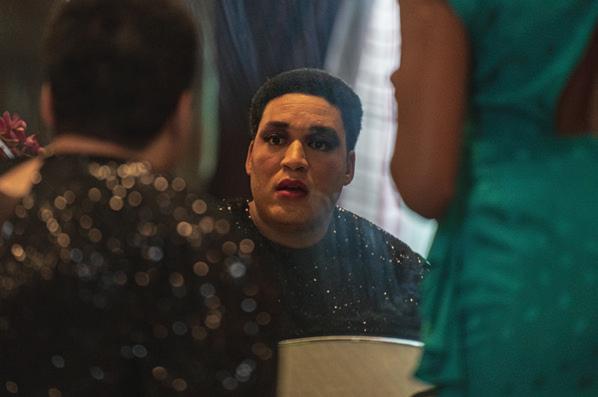
24 minute read
ARTS
ARTS McClelland uses art to present needed Essentials
by Steve Newton
Advertisement
Khari Wendell McClelland is clearly psyched about the array of musicians, poets, and thinkers he’s got lined up for The Essentials, a show streaming online from Vancouver’s York Theatre April 16 to 18.
As well as his own group, gospel-roots trio the Sojourners, performers include folk duo Twin Bandit, oud specialist Gordon Grdina, soul/R&B vocalist Tanika Charles, Inuit-style throat singers PIQSIQ, and horndriven dance band Queer as Funk, all of whom he regards as associates and friends.
But as he plugs the gig on the phone from his home in Strathcona, the singer also feels compelled to share the news about his new song and video, “Feels Real Good”, which he’ll present each night. McClelland sourced the lyrics for the tune by asking people on social media what they were doing in these challenging times to help themselves feel better.
“It was probably the most response I ever received for any single post on Facebook,” he notes. “They said, ‘I go to the forest.’ ‘I eat meals with friends.’ ‘I sing in a choir.’ ‘I just hang out with my kids.’ I took all of those answers and made a song, and I think it’s incredibly moving.
“A goal for me as a person,” he adds, “but also as an artist, is to connect with the community and to feel like I’m really responding to what people are feeling and thinking and needing, and this song really does that in a powerful way.”
McClelland has been connecting well with the Vancouver arts community since moving here from Detroit in 2004. He first hooked up with the Sojourners—which also includes founding members Marcus Mosely and Will Sanders—at the Vancouver Folk Festival three years later.
“I was actually singing with another group,” he recalls, “but I went up to them and immediately was just like, ‘Oh, my gosh, these are the guys that are doing the thing that I really want to do.’ I started singing to them, like an old Sam Cooke gospel song, and the rest is history. Very soon after that, we ended up joining forces and singing together.”
Growing up in Detroit, McClelland was influenced by a wide range of Black artists and different genres. Gospel, soul, R&B, hip-hop—even pop and electronic music—were all very popular as he was growing up and foundational in his listening. The first artist that he truly loved as a kid was Prince; today, he cites Leon Bridges and Brittany Howard of Alabama Shakes among his faves.
“I’m often just looking for something that’s true,” he says, “something that affects and moves me.” He says that the music of the Sojourners falls under that category.
“They represent a history that’s lived,” he says. “Both Will and Marcus are from the [American] south, living there through fierce segregation. I think they speak to the traditions that African Americans—and African Canadians, Black folks—come from, the early Black settlers and folks who were escaping enslavement, those early communities.
“But also they sing in a way that is kind of a lost art. The type of harmony singing and storytelling that is present in their songs isn’t particularly popular right now. So it feels like being part of an institution, in some ways, and like shepherding history.”
Speaking of history, the monumental events of the past year—including the global pandemic, the turmoil of the U.S. presidential election, the rise of the Black Lives Matter movement fuelled by the death of George Floyd and his killer’s current trial—have led to much soul-searching. Coming to grips with what needs to be done in the face of rampant racism and social injustice is part of McClelland’s aim with The Essentials.
“I feel like, overall, the feeling is that we want to be better and do things differently on the other side of all of this madness,” he ponders. “I feel like in some ways, some things had bubbled to the surface because of the pandemic, because there was this pause that allowed some things to come forward, things that are courageous and beautiful but also things that are really ugly and nasty—thinking about the attempted insurrection and all that stuff. It’s all there, kinda underneath the surface.
“But the hope is that we can come out the other side more deeply engaged in our common humanity and sorta learn how to love better. The pandemic has allowed us to spend more time with our families than we have in our entire lives; people look out for their neighbours in a way that they never have before. I feel like people are really attempting to form deeper bonds during this time, and it’s my hope that we do come out of this being changed, and we do remember what’s essential and what’s needed at this time.”
As hopeful as he is for the future, McClelland’s current wardrobe doesn’t include rose-coloured glasses. He’s not expecting MLK’s famous wish from 1963, that people be judged by character and not colour, to come true tomorrow.
“That’s still a dream,” he says. “It’s not like all of a sudden [racism] disappeared or something. I mean, I don’t want to disparage what I think of Vancouver, because in many ways it has been a beautiful place for me to be. I have a lot of friends, and it’s the only place that I’ve been racially profiled by police—both of those things are true. So I don’t think that we’re the shining city on the hill. There’s still work to do.” g
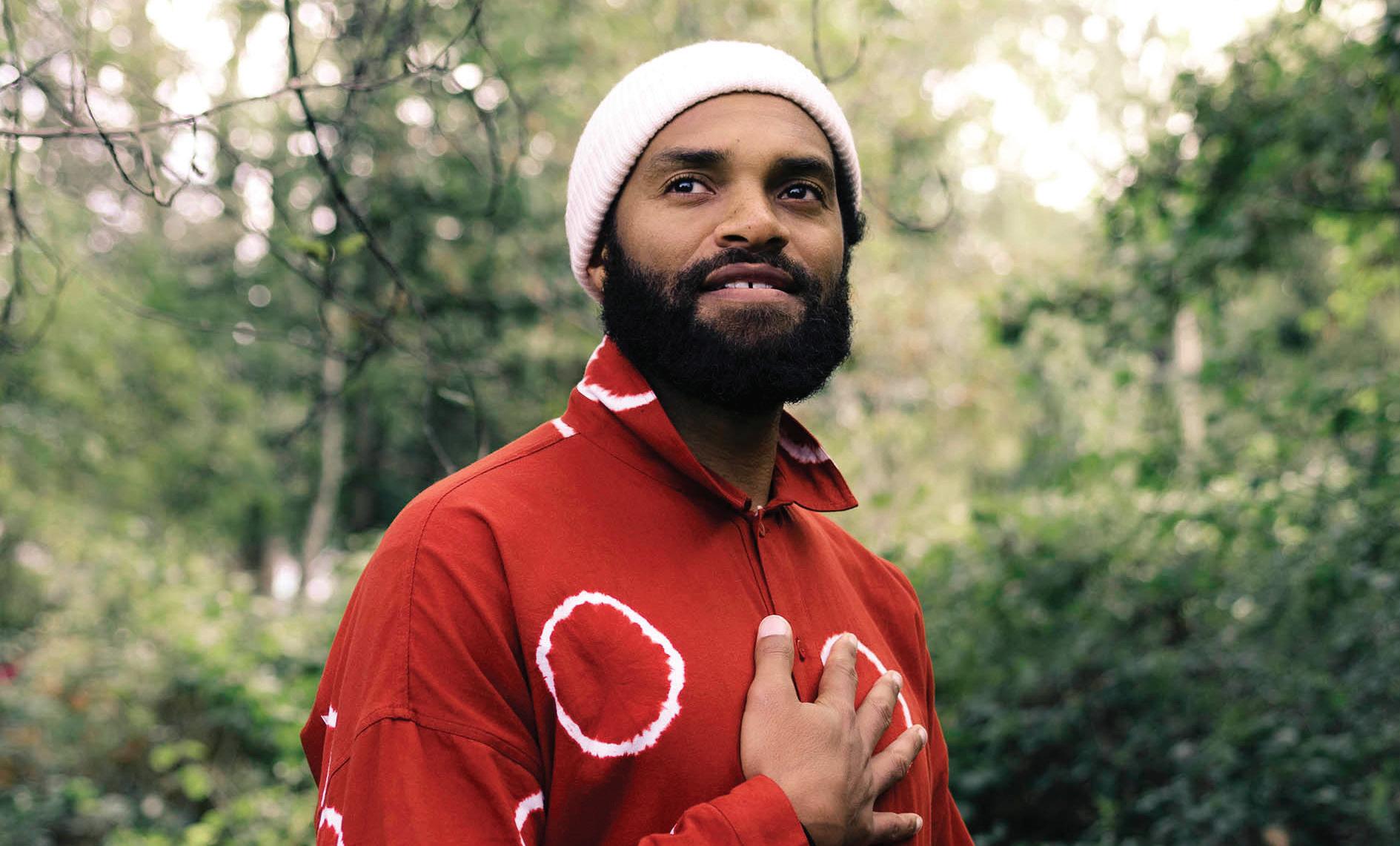
Khari Wendell McClelland hopes that the three nights of music, poetry, and thought that he is curating for the Cultch helps people understand what’s needed now. Photo by Andrew Querner.
FIND OUT WHAT’S ON VIEW
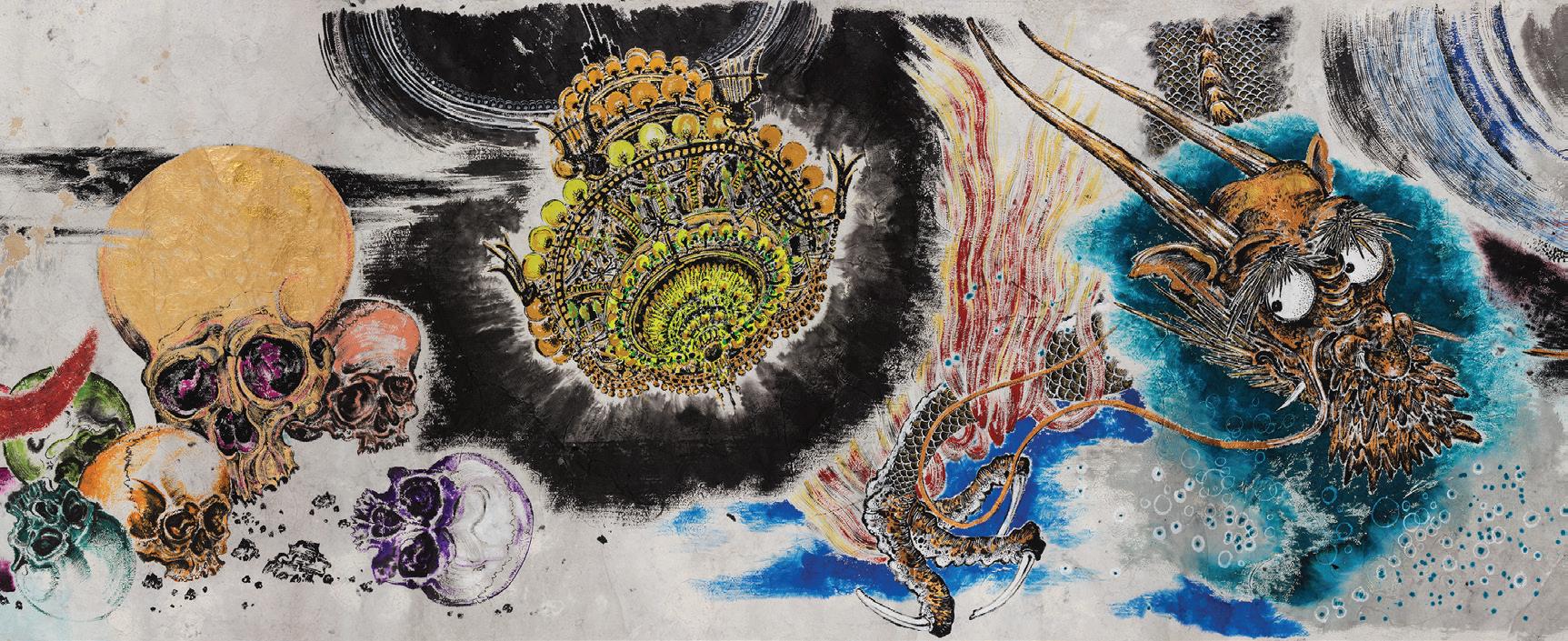
WE’RE OPEN 7 DAYS A WEEK
BOOK YOUR VISIT TODAY! VANARTGALLERY.BC.CA
Sun Xun: Mythological Time is organized by the Vancouver Art Gallery on behalf of the City of Vancouver’s Public Art Program, curated by Diana Freundl, Interim Chief Curator/Associate Director. Sun Xun, Mythology or Rebellious Bone, 2020 (detail), ink, gold leaf, natural colour pigment on paper, Courtesy of the Artist and ShanghART Gallery Stories that animate us is organized by the Vancouver Art Gallery and curated by Zoë Chan, Assistant Curator and Diana Freundl, Interim Chief Curator/Associate Director. Jérôme Havre, Cauleen Smith and Camille Turner, Triangle Trade, 2017 (detail), HD video, Courtesy of the Artists Pictures and Promises is organized by the Vancouver Art Gallery in collaboration with Capture Photography Festival and co-curated by Grant Arnold, Audain Curator of British Columbia Art, and Emmy Lee Wall, Executive Director, Capture Photography Festival. O Zhang, We are all the Future of the Earth, 2008 (detail), inkjet print, Collection of the Vancouver Art Gallery, Gift of the Artist
Major Sponsor: Major Sponsor: Community Partner: Media Partner:
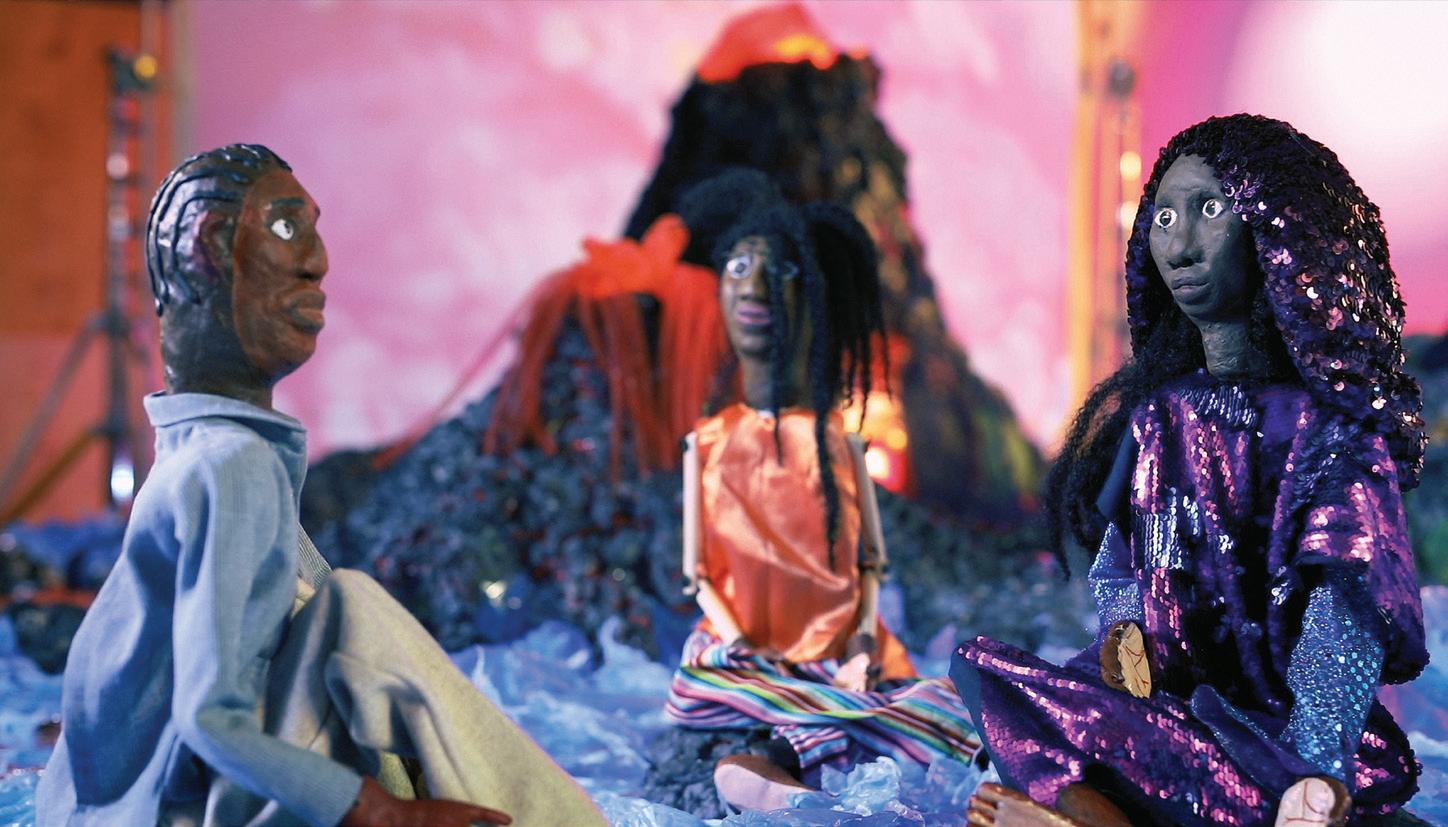
– Khari Wendell McClelland
ARTS Innovator Sandra Laronde shifts Canadian narrative
by Charlie Smith
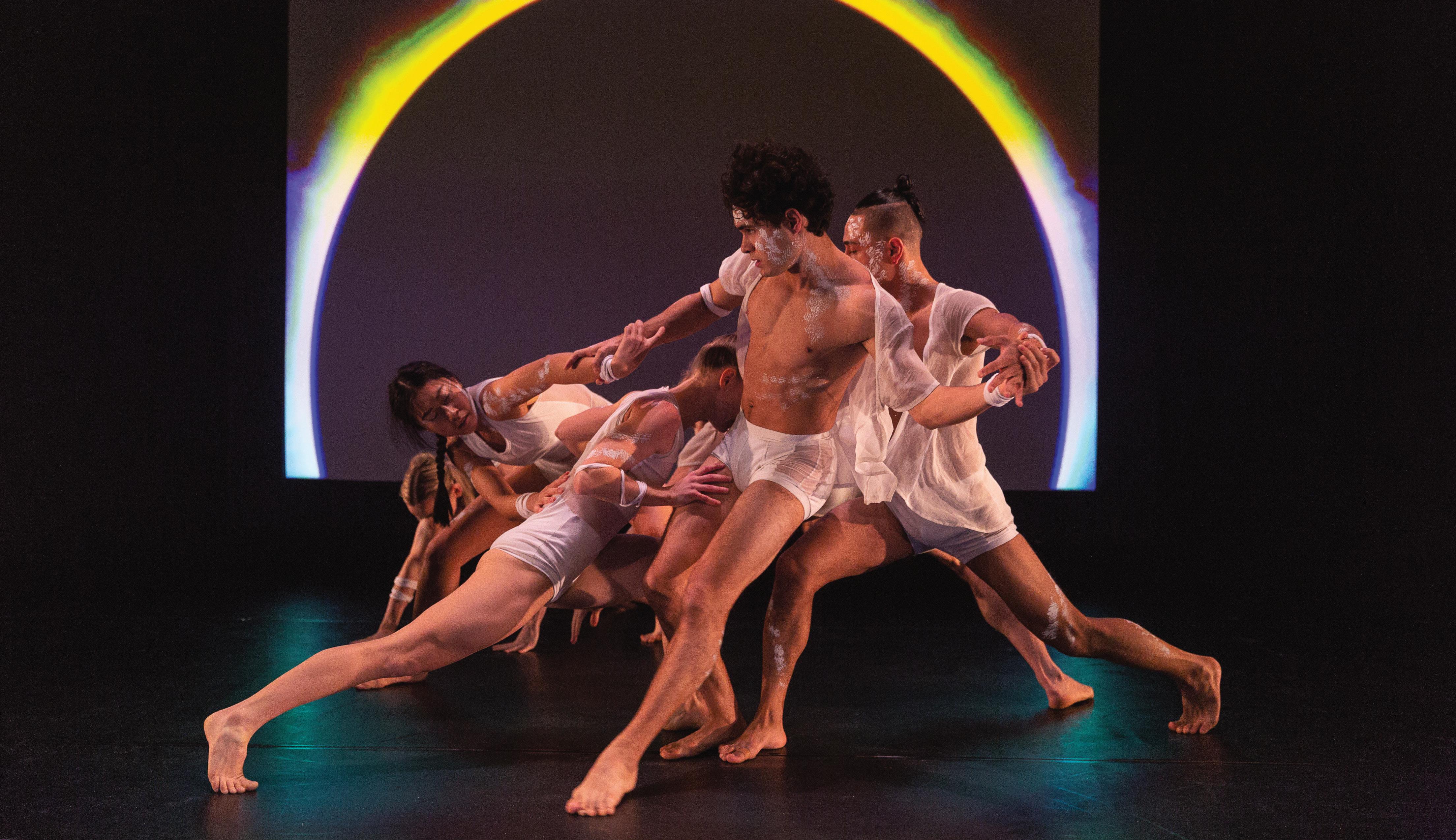
Trace is one of the Red Sky Performance shows that will be presented in a new film, More Than Dance, We Are a Movement, which is being made available by Digidance. Photo by David Hou. An Anishinaabe origin story about a journey from the Atlantic coast to the Great Lakes inspired Red Sky Performance’s Miigis in More Than Dance, We Are a Movement. Photo by Joanna Stoga.
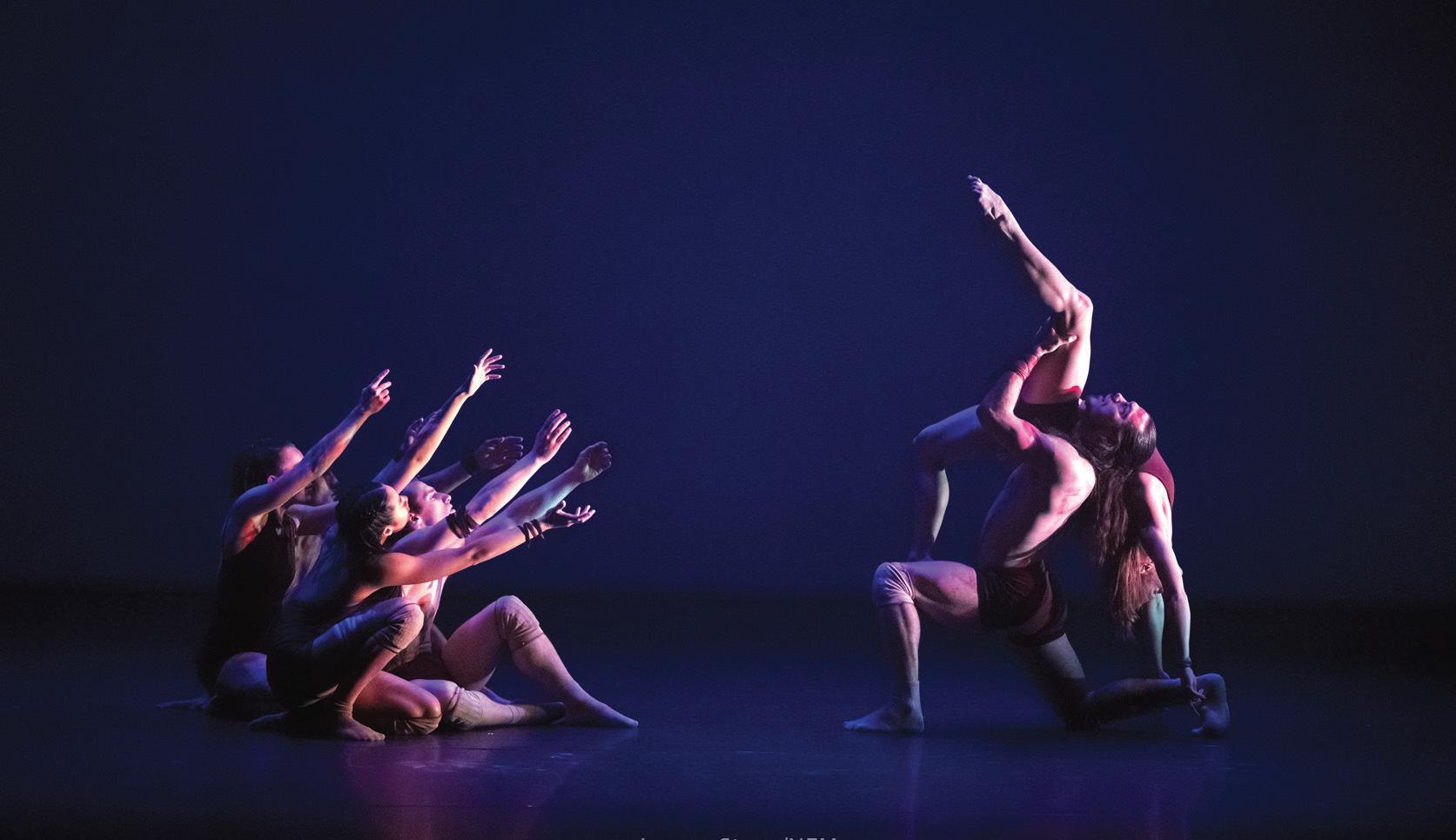
Red Sky Performance executive and artistic director Sandra Laronde seized upon the idea for one of her landmark shows while staring at the night sky. As a member of the Teme-Augama Anishinabai (People of the Deep Water) in northern Ontario, she was well aware of how important the cosmos is to her people.
“As Anishinaabe, we call ourselves the star people,” Laronde told the Straight by phone from her home in Toronto. “We believe that we came from the star world and we go back there after our time on Earth.”
Yet in Canadian schools, students learn far more about Greek and Roman stories about the night sky than those at the heart of Laronde’s culture. So she decided to remedy this with a multimedia contemporary dance show called Trace, which is inspired by her people’s star stories rather than those imported from ancient European cultures.
“What I would really love to see is that audiences become a lot more aware of the Indigenous narrative in Canada—Indigenous stories, Indigenous culture and artistry,” Laronde said. “Our stories matter. Our stories are in the centre of who Canada is. I mean, you can’t get more deeply Canadian than Indigenous people.”
Laronde, one of Canada’s leading Indigenous creators, has been at the forefront of a First Nations cultural resurgence in Canada during the past two decades. She was hoping to take Red Sky Performance on a 20th anniversary tour, but that plan was scotched by the pandemic.
In lieu of this, Digidance—a collaborative effort of four organizations, including Vancouver’s DanceHouse—will release a 55-minute film, More Than Dance, We Are a Movement. It includes showings of Trace and another Red Sky Performance show, Miigis, as well as an interview with Laronde.
Trace has won two Mavor Moore awards. Miigis, which features another Anishinaabe origin story of travelling from the Atlantic coast to the Great Lakes, won a Lieutenant Governor’s Ontario Heritage Award for excellence in conservation.
“Miigis is basically this tiny shell that is the symbol of the perfect breath of life,” Laronde said.
The show features many connections to water, reflecting the journey that her people took from saltwater to freshwater. Laronde said her company is hoping to shift the narrative of Canada, both consciously and unconsciously, through its performances.
“We can advance Indigenous truth and advance Indigenous knowledge and advance Indigenous artistry,” she declared. “Because the narrative of us to date is a colonial narrative—a mainstream narrative—that is ultimately a false narrative. And so we need to tell our own stories and be at the centre of our own stories to tell the truth of our narratives.”
Laronde is also known as Misko Kizhigoo Migizii Kwe, which is translated into “Red Sky Eagle Woman” in the Anishinaabemowin language. She said Indigenous stories, history, metaphysics, and artistry can help Canadians become more rooted to the land and the environment. That, she suggested, can help people feel less isolated.
Red Sky Performance is “very much interested in going beyond a human-centric
– dance innovator Sandra Laronde world”, Laronde emphasized. She also noted that human beings are not at the top of the hierarchy in the Indigenous worldview.
“Obviously, humans are very important—clearly—but there is so much more to the world: other sentient beings, other intelligences,” Laronde explained. “And I would love to see that Indigenous intelligence is not erased by the Canadian canon but that it’s embraced and held and celebrated.” g
Digidance will stream Red Sky Performance’s More Than Dance, We Are a Movement on demand from April 14 to 20.
GET YOUR FRENCH CANADIAN ON(LINE)! FESTIVALDUBOIS.CA
CONCERT PERFORMANCES BY FRANCOPHONE ARTISTS FROM ACROSS CANADA SHOWS FOR KIDS • ENTERTAINING VIDEOS • RECIPES • MUCH MORE!

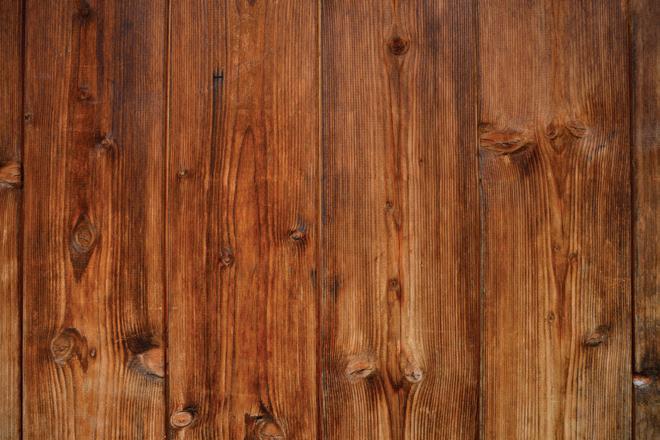
FREE GRATUIT

MOVIES Vancouver’s Valerie Tian speaks up—and acts out
by Craig Takeuchi
As simple as it sounds, staying silent while conveying there’s something simmering beneath the surface isn’t something that all actors can pull off. Some have failed. Others (like France’s Isabelle Huppert) have elevated it into an art.
Vancouver actor Valerie Tian succeeds in the task, making quite the understated impression in Karen Lam’s atmospheric horror The Curse of Willow Song.
As the titular character, an ex-convict attempting to rebuild her life in the Downtown Eastside, the Vancouver neighbourhood known as Canada’s poorest postal code, Willow is someone whom those around her—her probation officer, her boss, her unlikely allies—talk at, not with. Her eyes, however, say what she does not.
Facing too many pressures and being too inexperienced to speak up is something that Tian can relate to. That’s because she grew up as a child actor, shuttling back and forth between Vancouver and Los Angeles since age 10.
“All the people who were micromanaging my life…[were] talking about me as if I’m not there,” she says in a phone interview.
Tian says she realized that in their efforts to turn her into an “overnight sensation”, they were just after money. That recognition was a killjoy moment, because she pursued the business thinking the work would be fun.
As a child, she desperately wanted to have a job. Consequently, her mom (“to
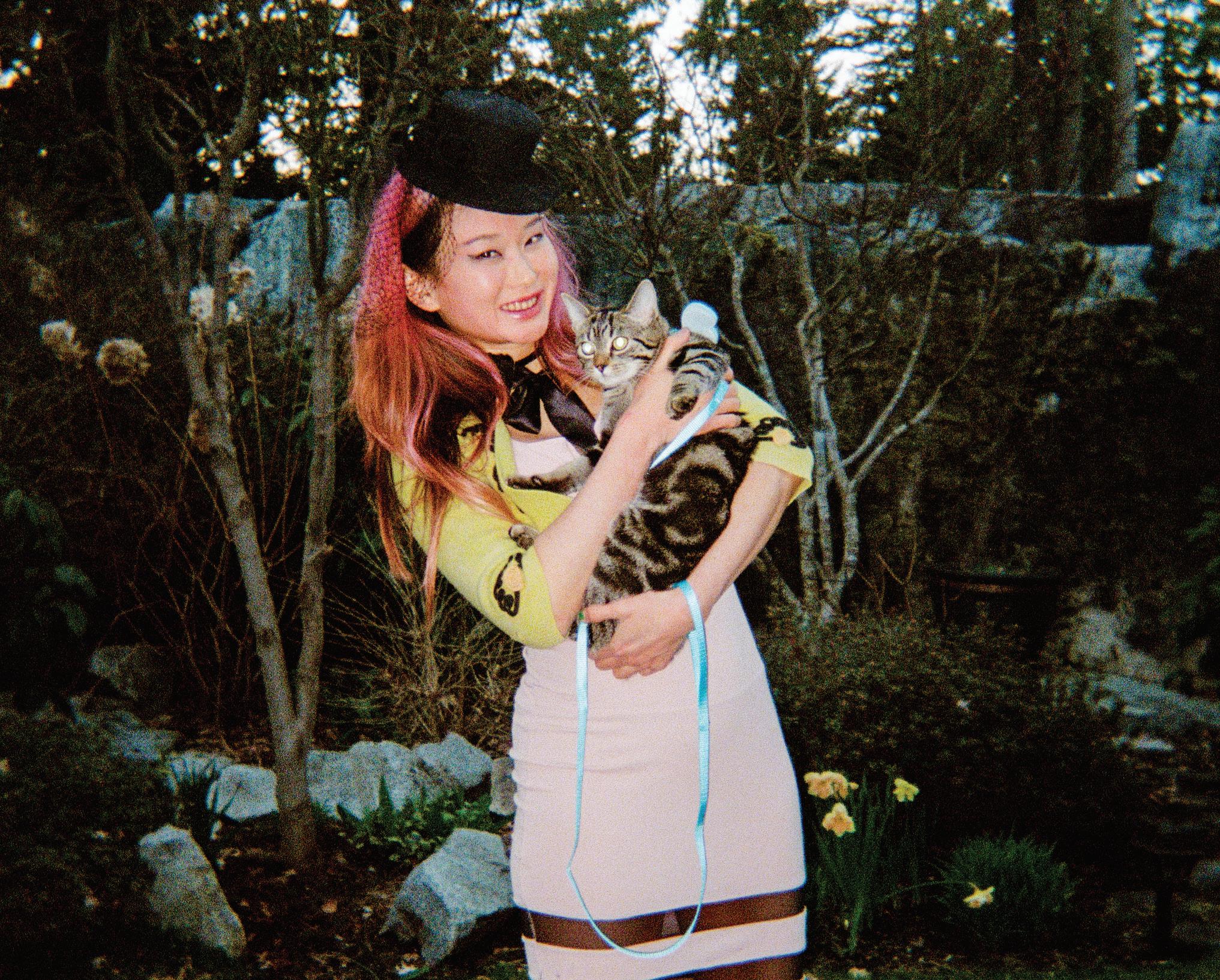
Valerie Tian, whose first starring film role was in Vancouver filmmaker Mina Shum’s 2002 Long Life, Happiness & Prosperity, had her latest lead in local director Karen Lam’s The Curse of Willow Song. shut me up”) got her into a talent agency to be a model. In a twist of fate, the shy Valerie accidentally signed up for acting classes, despite fearing public speaking.
“But that ended up being good for me,” she says. “Now I can’t shut up.” She started off doing background work in films like Saving Silverman and Air Bud. But Tian says her agent wasn’t confident about submitting Asian actors for roles because he didn’t think they would sell. Then a prime opportunity popped up: Vancouver filmmaker Mina Shum’s 2002 comedy-drama Long Life, Happiness & Prosperity.
Tian prepared hard for the audition (she chalks up her drive to having a “tiger mom”) and it paid off: she bagged the role of earnest 12-year-old Mindy Ho, with Sandra Oh playing her mother.
She has since appeared on TV shows such as Motive, iZombie, and The Magicians, and the role she says she gets most recognized for is pro-life protester SuChin in 2007’s Juno.
Her recent work has been proving that she has more to offer. In addition to Willow Song, one of her only other lead roles in film was her portrayal of a Chinese woman in Trinidad who is coerced into sex work to pay off a “smuggler tax” in the 2017 feature drama Moving Parts.
But like others in her situation, the odds are stacked against her.
During her 20-year career, Tian says, she has seen the industry move beyond offering nonwhite actors roles as “human props”. Nonetheless, she thinks there’s still a lack of lead roles for Asian Canadian talent.
Although she hid her kung fu ability as a child actor because she didn’t want to be stereotyped, she would now love to do a Jackie Chan-style, over-the-top comedic role. After all, since she’s come into her own, she’s clearly ready to kick ass—and laugh about it. g
Violation partners defer to each other’s passions
by Norman Wilner
Not a lot of filmmakers have been lucky enough to spend the past year sheltering in place with their principal collaborator. Madeleine Sims-Fewer and Dusty Mancinelli are the exception.
The personal and professional partners’ inventive and unnerving short films “Slap Happy”, “Chubby”, and “Woman In Stall” led to last year’s devastating first feature, Violation, which stars Sims-Fewer as a woman working her way through trauma as methodically and horribly as possible. They’ve been enduring the pandemic together, shepherding Violation through the mostly virtual festival circuit and trying to figure out their next thing.
“The beauty of working with a collaborator is that I feel like we’ll never run out of ideas,” Mancinelli says. “We literally don’t have enough time to develop all the ideas.”
The pair had been working separately in Toronto for almost a decade before they met at the 2015 TIFF Talent Lab. Which doesn’t sound especially interesting, until
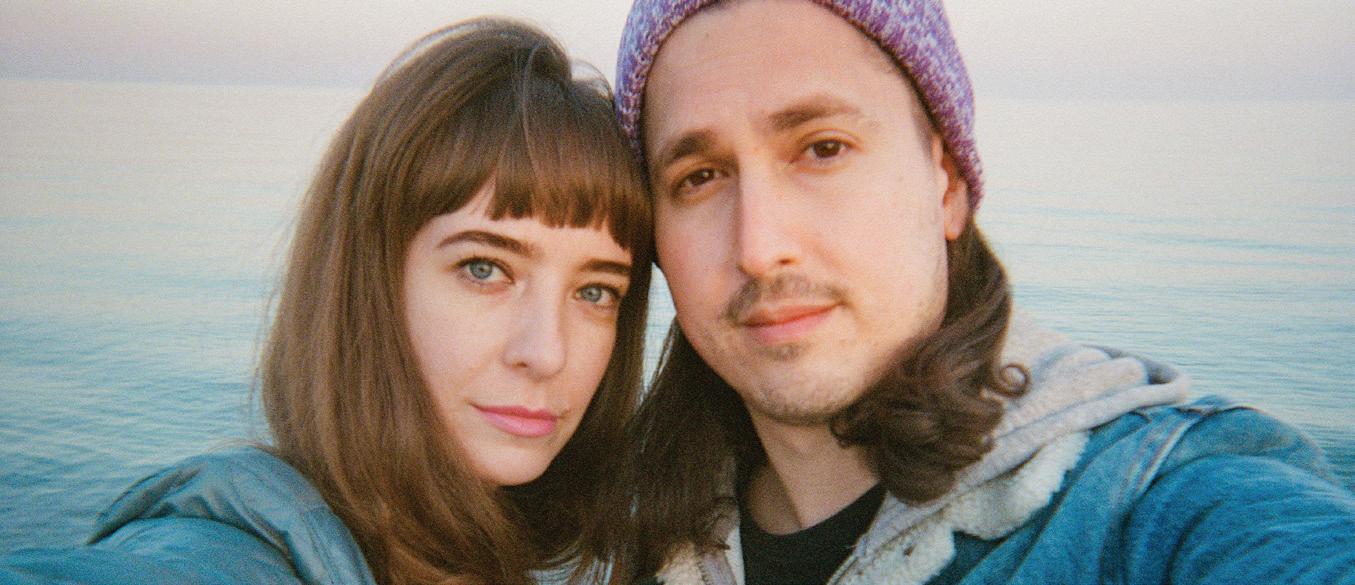
Personal and professional partners Madeleine Sims-Fewer and Dusty Mancinelli share the roles of writer, producer, and director in the making of their shorts and, now, feature projects. we pull back a little.
“We both went to York, just a year apart, and never met each other,” Sims-Fewer says. “So we’re both going to Talent Lab, and we had all our friends saying, ‘Oh, Dusty’s there too! You guys should meet each other!’ And I watched Dusty’s films—we all got the chance to watch each other’s work before the lab—and just really loved the films he was making. We just had so much to talk about, right from the first day.” “We were both discovering the kinds of filmmakers we wanted to be,” Mancinelli says, “both in terms of the stories we were interested in telling and the aesthetic that we were drawn to. And there’s almost a similarity to self-actualization as a human being as you try to get comfortable in your own skin and figure out who you are. I feel like I didn’t really know who I was as a filmmaker, really, until we started.”
“That’s something we discovered together,” Sims-Fewer adds.
The pair work in concert as writers, producers, and directors, though that can be complicated by the fact that SimsFewer is also acting in most of their projects—and frequently doing something very, very intense.
“We have certain rules that kind of help us negotiate or mitigate any potential conflict on-set,” Sims-Fewer says. “Simply: the most passionate idea always wins. We carry that forward in the writing process, too.”
“If Madeleine rewrites me and then I put something back, she can see that I really like it and leaves it,” Mancinelli says. “Or she’ll try to rewrite it again and I’ll rewrite her. But we try to avoid the idea of ego and negotiating each other’s own desires, rather making it about the work itself.” g
MOVIES Canadian director’s short films have a big impact
by Kelsey Adams
Kelly Fyffe-Marshall calls herself an “impact filmmaker” because her short films and upcoming debut feature are created with the purpose of shedding light on unsung stories. “Make ripples where you are” is the advice that the Brampton, Ontario–based writer and director gives to anyone who asks for guidance.
Her short films “Haven”, “Black White Blue”, and “Black Bodies”—which have screened at the Toronto International Film Festival, SXSW, and Sundance—tackle childhood sexual assault, police brutality, and anti-Black racism through a visceral but often poetic lens.
“Black Bodies” was one of six Canadian projects in this year’s Sundance Festival, out of 118 total films. In February, FyffeMarshall tweeted about the Canadian media’s relative disinterest in the film, a tweet that caught the attention of American director and producer Ava DuVernay. After she reposted it, the tweet went viral and Fyffe-Marshall was invited to speak with numerous Canadian outlets.
“I told every interviewer that they were proving that what I said was correct. I got the American co-sign and now I’m being asked about my film.”
“Black Bodies” is a metaphorical interpretation of an experience Fyffe-Marshall had in 2018 in San Bernardino, California. She and friends rented an Airbnb to attend Kaya Fest, the Marley family’s annual festival. On their last day, as they were loading the car with luggage, seven police cars and a helicopter swarmed them.
An elderly white woman called the cops because she assumed they were breaking and entering. “She called the police on us because we were Black people in that neighbourhood.”
Fyffe-Marshall wrote “Black Bodies” immediately after the traumatizing incident. She often heals through her filmmaking. “It’s definitely a way for me to push things out. I’ve realized that I start a lot of my movies, not with ideas, but with emotions,” she said. “Something will happen and I’m like, ‘That would be interesting to write a movie around.’”
She’s been working with producer Tamar Bird and director of photography Jordan Oram since they met as production assistants on the same set eight years ago. Their next venture together is a set of feature films, When Morning Comes and Summer Of The Gun. The former is an immigration story about a young boy from Jamaica. The latter finds the same protagonist implicated in events during the summer of 2005 in Toronto, which was rife with gun violence. Both are deeply homegrown stories, but of a kind that the Canadian film industry hasn’t been so willing to accommodate.
In her 10 years in the industry, FyffeMarshall has worked mainly on American productions. She attributes this to it being very difficult to secure funding for Canadian projects.
“We’re very heavily dependent on grants here, so all of our filmmaking goes through gatekeepers,” she said. “The infrastructure of Canadian film means that we’ve gradually become this service machine for American film production. There’s no support here for Canadian creatives to flourish and to build their career here.”
Earlier on in her career, mentors warned Fyffe-Marshall that if she stayed in Canada she would become a martyr. “I told them I’m going to be the one who stays here, because if we continue to leave, the problem is going to continue. What we’re trying to do is figure out how not to hinder our own careers and also create a new trajectory for those coming up behind us.” g
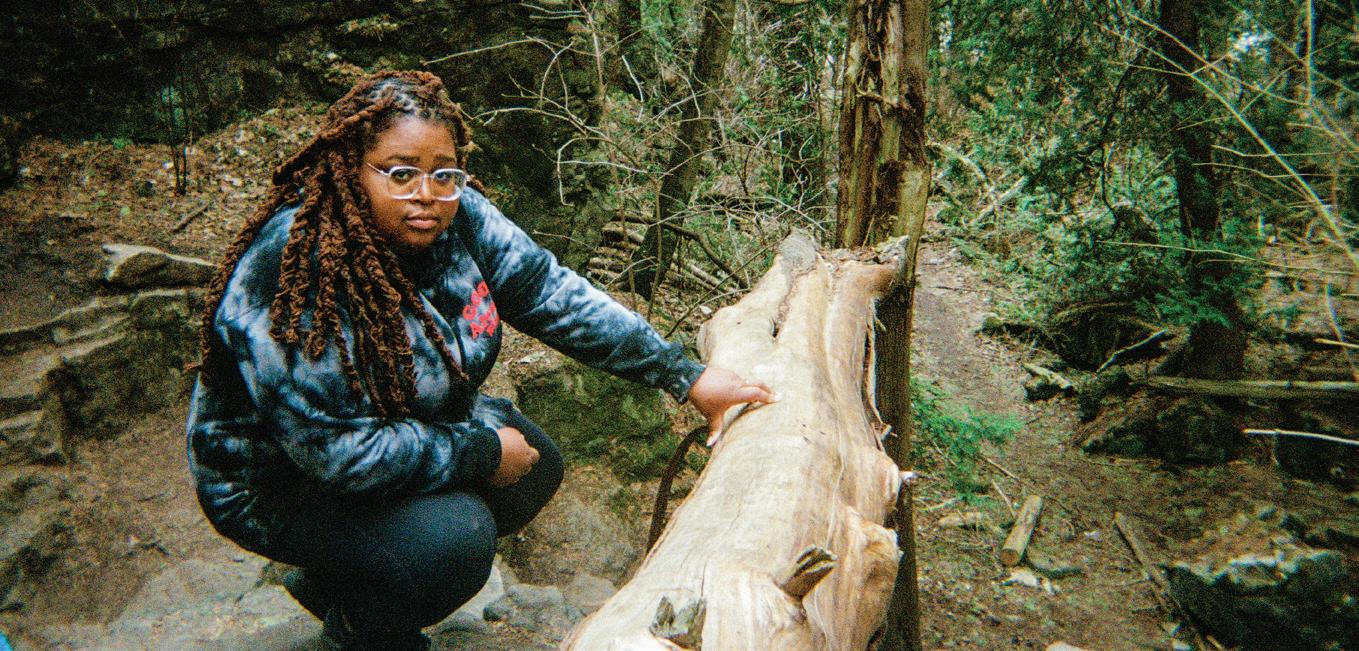
Ontario-based writer-director Kelly Fyffe-Marshall made a conscious decision to remain in her home country to make her films, despite a lack of financial support for Canadian filmmakers.
Young breakout star gets a strong start in Beans
by Glenn Sumi
Tracey Deer’s debut feature, Beans, begins and ends with the film’s 12-year-old Mohawk protagonist introducing herself to white people.
The contrasting scenes show the huge dramatic and personal journey that Tekehentahkhwa (nicknamed Beans) has travelled. But none of this would register without the committed, authentic performance by its young actor, Kiawentiio.
The film is a coming-of-age picture set against the 1990 Oka crisis, in which some of Quebec’s Indigenous communities faced off against police, the military, and citizens because of the proposed expansion of a golf course onto Mohawk burial grounds. Deer experienced the brutality and racism of the Oka crisis firsthand as a 12-year-old, something she obviously brought to the film.
“It was a huge help that it was Tracey’s story,” Kiawentiio says on a Zoom call from her home in Akwesasne, Ontario.
“But it was two-sided. I felt pressure because it was her story and I wanted to get it exactly right. But it was helpful because it was her experience and she could tell me exactly what she was feeling.”
The film recounts some horrific scenes. In one, Beans, her mother (Rainbow Dickerson), and sister (Violah Beauvais) are in a car when Québécois throw rocks through the windows.
“Tracey’s number-one priority was making us feel comfortable on-set,” the young actor says about those scenes.
“For the drivers in front of us, some of the actors driving had probably lived through it, too, or had family members affected by the crisis. Tracey didn’t want anybody to be retraumatized. Every time we would reset, the actors would cheer at us and smile, because they didn’t want us to think they were actually like the people they were portraying.”
In terms of emotional scenes, Deer helped lead Kiawentiio through the mix of feelings.
“She’d say to me, ‘Oh, and you’re so mad about this…and this…,’” the actor says. “She’d talk me through these emotions.”
Although only 14—she turns 15 at the end of the month—Kiawentiio, like the aspiring-artist character she plays, has many talents.
Besides acting—her breakthrough came when she was cast in the third season of Anne With an E—she’s also a visual artist and a singer-songwriter. She released her first EP, In My Head, last month. During the making of Beans, she wrote a song called “Light At The End”; the creative team was so impressed with it that they included it as the film’s closing-credits music.
She has a small role in the new sitcom Rutherford Falls, which begins airing on April 22. One of the highlights from that was meeting Indigenous actor Michael Greyeyes, whom she calls “nice and sweet and funny—a really cool role model.”
Although she’s busy as a Grade 10 student and isn’t sure what artistic practice to follow, she does have one acting fantasy.
“It would be a dream if I could work on Avatar: The Last Airbender,” she says. “I’m dying to be Katara.”
I google the character and learn about her fierce, heroic journey. Oh, yeah. It’ll happen. g
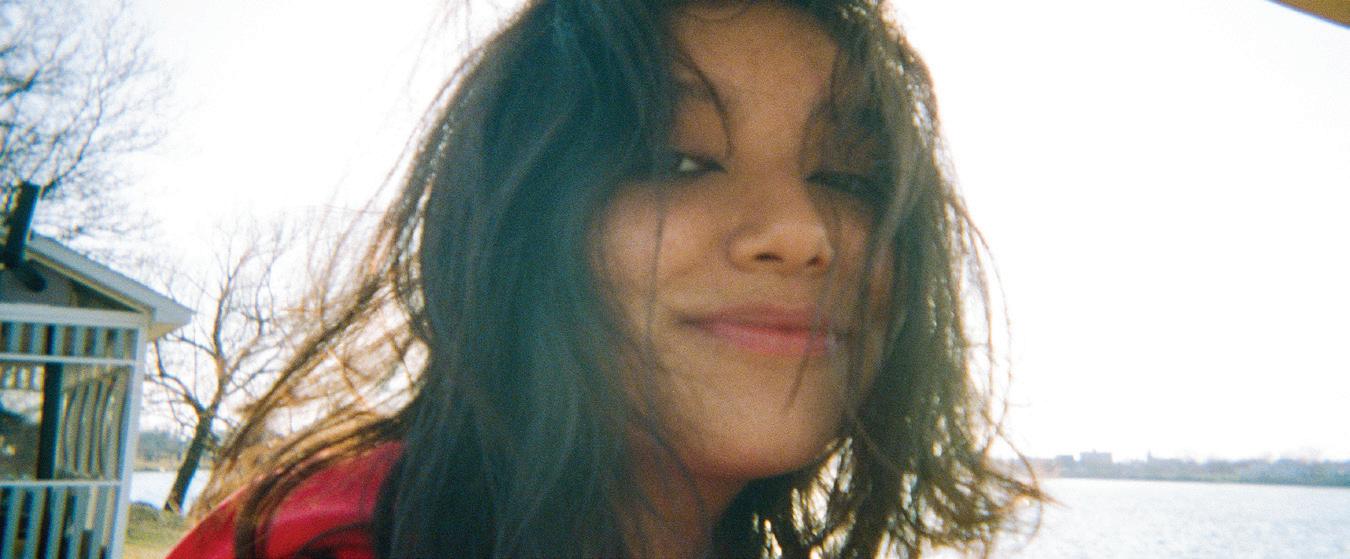
Kiawentiio got started in acting with a role on TV’s Anne With an E but is also a visual artist and a singer-songwriter with a song that was used in her feature-film debut, all by the age of 14.
MOVIES Director’s film and art share roots but not venues
by Radheyan Simonpillai
Caroline Monnet is speaking to NOW over Zoom from her Montreal studio while keeping an eye on Quebec’s COVID-19 announcements. The Algonquin-French multimedia artist, whose work is featured on both international screens and galleries, is preparing her latest solo show, which is set to open at the Montreal Museum of Fine Arts on April 21.
The pandemic has already delayed the premiere of Monnet’s debut feature film, Bootlegger. The film, which won a screenplay prize at the 2017 Cannes Film Festival’s Cinéfondation, stars Kawennáhere Devery Jacobs as a young woman returning to her reserve during a referendum on prohibition laws. Principal photography wrapped in December 2019, but COVID-19 stretched the postproduction schedule.
“We tried to edit at a distance, but it was just too difficult,” Monnet says. She’s a handson artist, as the installations behind her attest. She tends to discover her films in the editing room, so the virtual-collaboration thing isn’t exactly her tempo. “It stops all spontaneity, just being able to sit in the same room as my editor and share and jam with ideas.”
Bootlegger, which is now complete, also feels like a huge divergence from her other work, just because of the nature of collaboration. The film had Monnet working with the whole film-business apparatus (producers, distributors, etcetera) on a feature that is relatively conventional compared to her other work.
Her film and fine-art career were forged in the same fire—experimental video shorts and installations like Ikwé (2009)—but Monnet says they splintered into two callings. Hypnotic and exhilarating films like “Roberta” (2014), “Mobilize” (2015) and “Creatura Dada” (2016) were playing film festivals like TIFF and Sundance while taking on more narrative qualities along the way. Meanwhile, the fine art became sculptures and installations that would show in galleries.
“It’s two very different brains and industries,” Monnet says. “They don’t really mix.”
But Monnet’s entire career has been about bridging disparate identities. Her installations merge modern art with Indigenous tradition. For her 2017 exhibition Memories We Shouldn’t Speak Of, Monnet made sculptures from hair dripping with tar—a nod toward the tar sands and Indigenous beliefs that hair holds onto memories. Her short films often feature Indigenous people going on a journey of some kind, reaching back into their heritage in modern times, or connecting their history with their future.
For Monnet—whose father is French and whose mother is from the Anishinabeg First Nation’s Kitigan Zibi in Quebec—these are expressions of the space she occupies and a reclamation, finding a sense of pride in her identity and heritage. Even Bootlegger, which is the first feature to be shot in Kitigan Zibi, was an opportunity to connect with the distant cousins and community she only visited during family occasions and powwows.
“It was really, really important for me to spend time there,” Monnet says, “to work with the community, for them to get to know me better, for me to know them better.” g
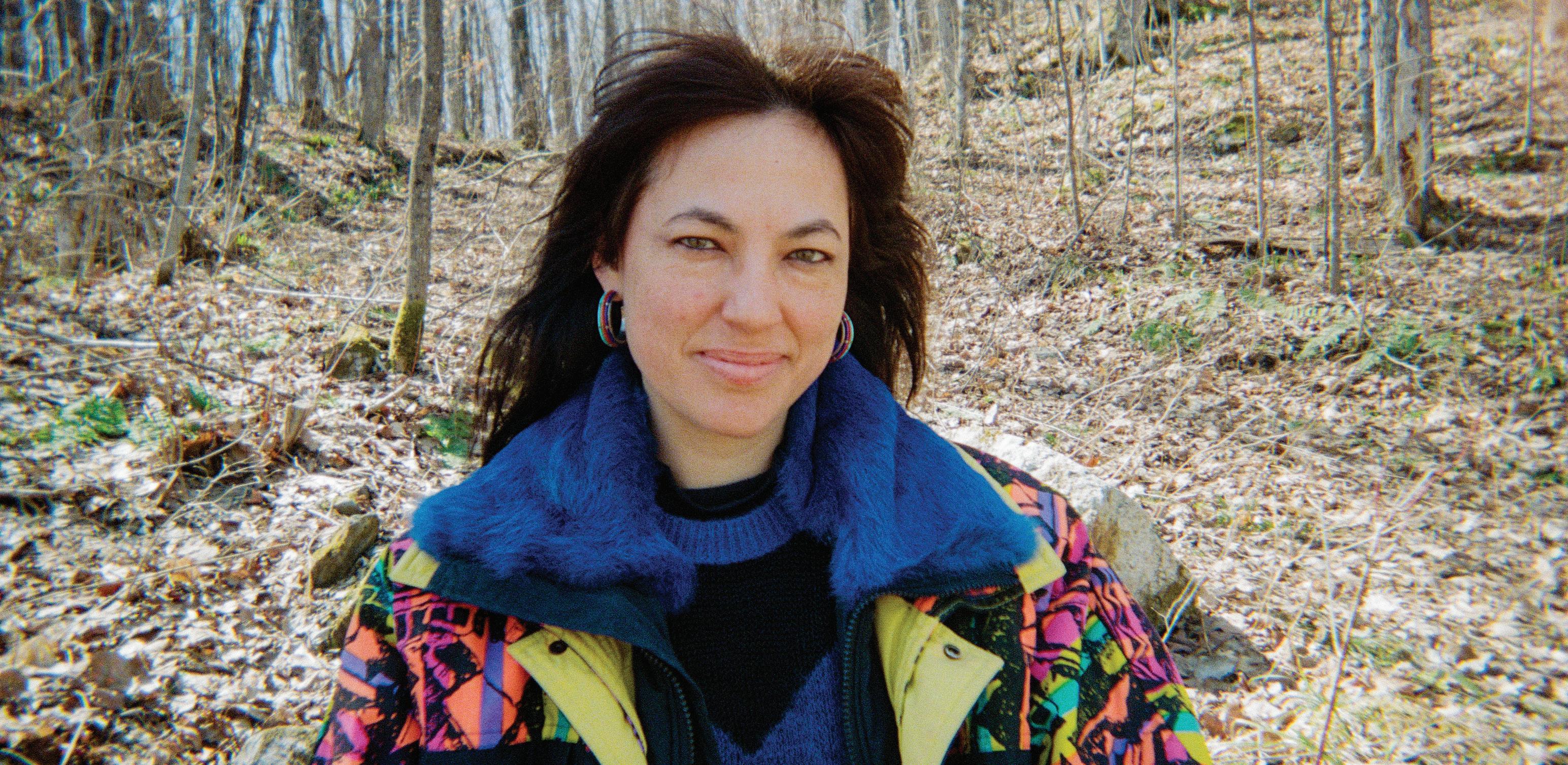
Caroline Monnet’s first feature film, Bootlegger, completed its principal photography more than a year ago, but the pandemic forced the multimedia artist to work virtually with her film editor.
6 short films made in only 8 days
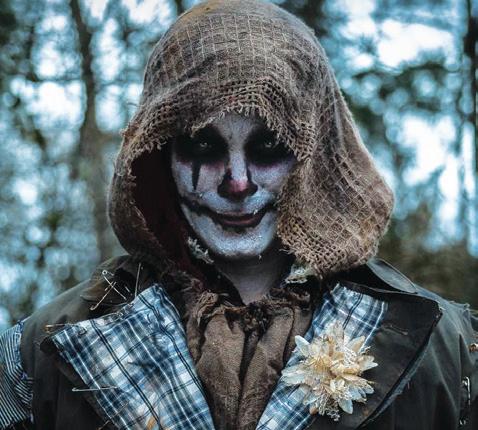

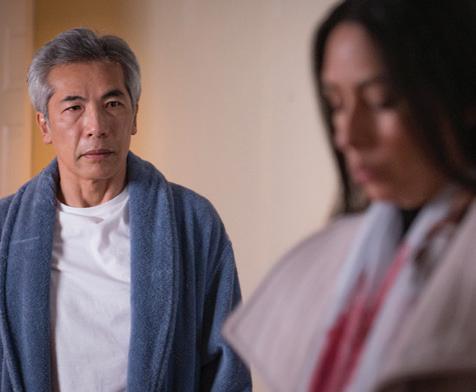
crazy8s

gala Online Screening & Virtual Afterparty May 1 – 8:00 pm




